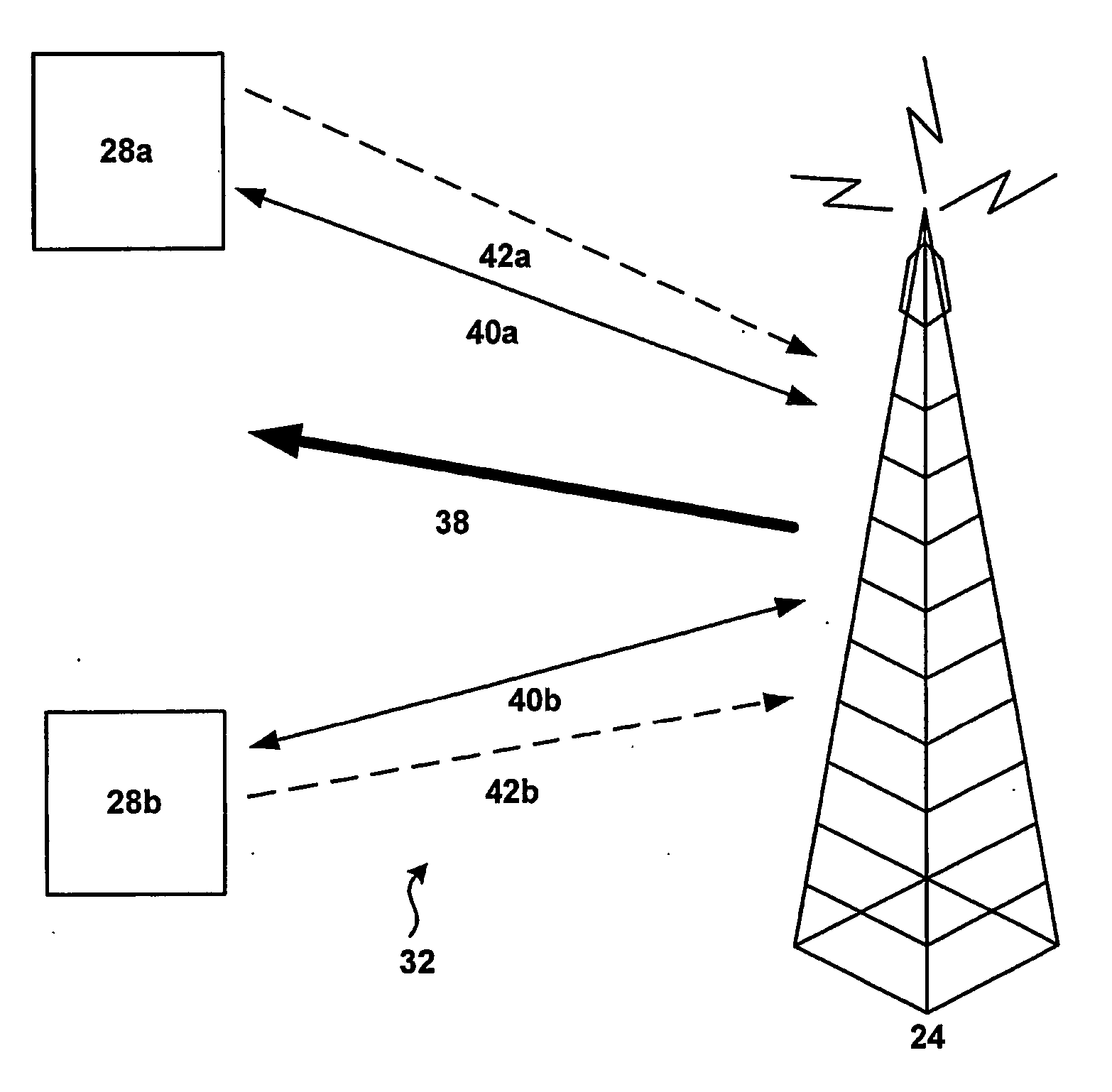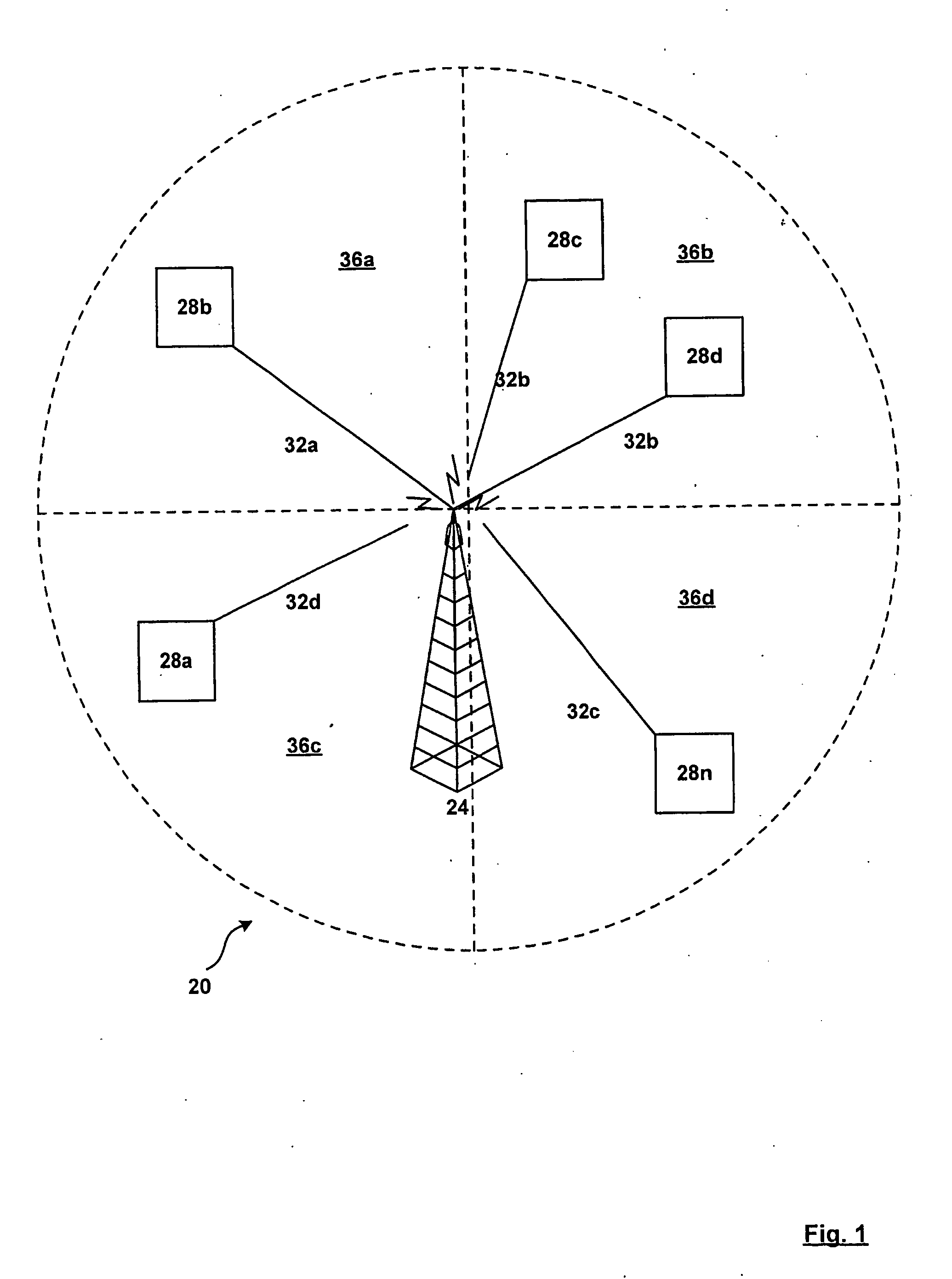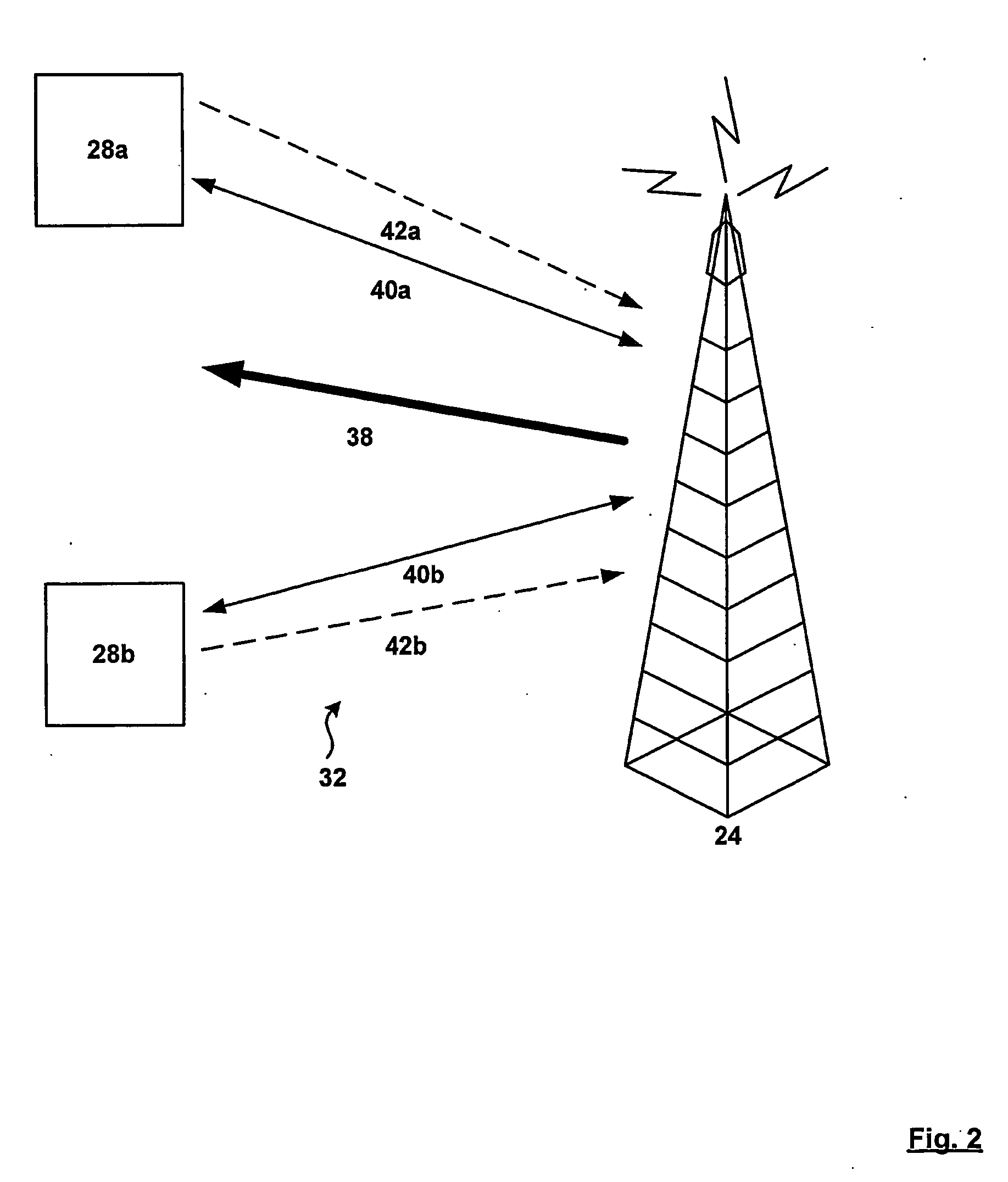System, apparatus, and method for uplink resource allocation
a resource allocation and system technology, applied in the field of radio resource allocation within networks, can solve the problems of unsatisfactory subscriber experience, large capacity requirements of data traffic, and subscriber dissatisfaction, and achieve the effects of high data rate, sufficient network resources, and efficient use of available uplink resources
- Summary
- Abstract
- Description
- Claims
- Application Information
AI Technical Summary
Benefits of technology
Problems solved by technology
Method used
Image
Examples
Embodiment Construction
[0054] Referring now to FIG. 1, a wireless network for transmitting data is indicated generally at 20. Network 20 includes a radio base station 24 and a plurality of subscriber stations 28a, 28b . . . 28n. In a presently preferred embodiment, radio base station 24 is connected to at least one data telecommunications network (not shown), such as a land line-based switched data network, a packet network, etc., by an appropriate gateway and one or more backhauls (not shown), such as a T1, T3, E1, E3, OC3 or other suitable land line link, or a satellite or other radio or microwave channel link or any other link suitable for operation as a backhaul as will occur to those of skill in the art.
[0055] Base station 24 communicates with subscriber stations 28 which, in a present embodiment of the invention, are installed at subscriber premises, as is common in a wireless local loop (WLL) system but could also be nomadic Pr mobile stations as will be apparent. The number ‘n’ of subscriber stat...
PUM
 Login to View More
Login to View More Abstract
Description
Claims
Application Information
 Login to View More
Login to View More - R&D
- Intellectual Property
- Life Sciences
- Materials
- Tech Scout
- Unparalleled Data Quality
- Higher Quality Content
- 60% Fewer Hallucinations
Browse by: Latest US Patents, China's latest patents, Technical Efficacy Thesaurus, Application Domain, Technology Topic, Popular Technical Reports.
© 2025 PatSnap. All rights reserved.Legal|Privacy policy|Modern Slavery Act Transparency Statement|Sitemap|About US| Contact US: help@patsnap.com



